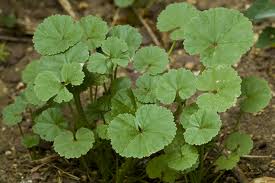Every year about this time I go crazy eating wild foods, the plants are everywhere. One of my favorites is common mallow. It grows all over and I love the taste of it raw. As I walk down the hiking trails near my house, I often snack on it.
For some reason while I have written posts on many different wild plants, this is the first time I have posted anything about mallow. Common mallow (Malva neglecta) is sometimes called buttonweed, cheeseplant, cheeseweed, dwarf mallow and roundleaf mallow. Although most people considered this plant a weed, it is an excellent green that can be eaten raw or cooked.
The leaves and young shoots are my favorite part of the plant, although the seeds, flowers and roots can be eaten. It has a mild pleasant flavor, and is said to be highly nutritious. Common mallow can be added to salads to make an excellent lettuce substitute or they can be cooked as greens.

The leaves are mucilaginous, in other words, they get thick and sticky similar to okra when cooked. Some people find this mucilaginous texture unpleasant. I like it better raw. The seeds can be eaten raw or cooked. They a pleasant nutty flavor, but are so small you won’t want to collect them in quantity.
A decoction of the roots can be used as an egg-white substitute for making meringue. Bring the roots to a boil in water and then simmered until the water becomes quite thick. This liquid can then be mixed in much the same way as egg whites.
Medicinal Uses: Older herb books state that parts of common mallow are astringent, laxative, urine inducing, and have agents that counteract inflammation, that soften and soothe the skin when applied locally, and that induce the removal (coughing up) of mucous secretions from the lungs.
The Cherokee Indians put the flowers in oil and mixed them with tallow for use on sores. The Iroquois Indians made a compound infusion of plants applied as poultice to swellings of all kinds, and for broken bones. They also applied it to babies’ swollen stomach or sore back. The Mahuna Indians of California used the plant for painful congestions of the stomach. The Navajo, Ramah Indians made a cold infusion of plants taken and used as a lotion for injuries or swellings. The plant is also an excellent laxative for young children.
Cream, yellow and green dyes can be made from the plant and the seed heads. The root can be used as a toothbrush.
A word of warning – Wild-harvested mallow are generally considered safe to eat and for medicinal use, cultivated soil may make common mallows leaves inedible. Nitrogen-rich gardens or farms cause the plant to store a high level of nitrates in the leaves. Use caution if you grow your own mallow or collect it by a stream near fertilized farms
As always I want to remind you to be sure of the identity of any wild plants that you choose to eat. There are wild plants that will make you sick or kill you, always be sure of what you consume.
Howard



Does anyone know how to store common mallow for later use? I would like to try using for sore throat or couch, but no telling when I will have a need. I am able to collect the green seed pods now and would like to store. I don’t know if the dry seeds can be boiled down to a mucus type liquid–will try once I get to that point.
I dehydrate then pulverize to store in jars. I then may mix it with ‘RealSalt’, nutritional yeast and other things for a tasty nutritional green supplemental mix to sprinkle on baked taters, popcorn, etc.
InJoy! :+)
In Morocco, Mallow dish is very famous and highly popular. it is called Boukkola. Because it is difficult to find Mallow in Europes’ Markets like it is in Morocco, people tweak the recipe and use spinach instead. we store it in freezers just after steaming and it is an amazing winter dish that I adore. here is the recipe:
https://www.youtube.com/watch?v=kGdNpLi8-xc
enjoy!
Awesome! Thank you for sharing the YouTube link! I have this growing in my yard and until today I never knew that this was an edible plant. I’m definitely going to try it. I only wish that I didn’t pull out and discard the other ones. Now I know better.
Does it matter if the flowers are blue or pink?
I have been looking for the edible Chinese mallow seeds. Can you advise me on how and where I can get it?
I love the common mallow
I usually get it to boil and drain it than I’ll put it in pan fry it bit and add eggs to it
The taste of mallow and eggs combine really nice and full of nutrients
Ever thought of growing in garden? We are a lot in Jordan
Have not found it wild in Ohio.